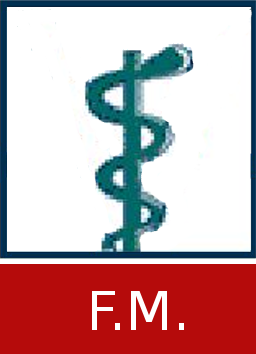Thesis, COLLÉGIALITÉ
Lambion, Marine 
Promoteur(s) :
JOURET, François 
Date de soutenance : 2-jui-2024 • URL permanente : http://hdl.handle.net/2268.2/20514
Détails
| Titre : | Thesis, COLLÉGIALITÉ |
| Auteur : | Lambion, Marine 
|
| Date de soutenance : | 2-jui-2024 |
| Promoteur(s) : | JOURET, François 
|
| Membre(s) du jury : | GILBO, NICHOLAS 
VANDERMEULEN, Morgan 
BRIQUET, Alexandra 
|
| Langue : | Français |
| Nombre de pages : | 67 |
| Mots-clés : | [fr] MSC [fr] Cellules Stromales Mésenchymateuses [fr] Culture cellulaire [fr] Caractérisation cellulaire [fr] Différenciation cellulaire [fr] FACS [fr] Immunologie [fr] MLR |
| Discipline(s) : | Sciences de la santé humaine > Multidisciplinaire, généralités & autres |
| Centre(s) de recherche : | LTRN |
| Public cible : | Chercheurs Professionnels du domaine Etudiants Grand public Autre |
| Institution(s) : | Université de Liège, Liège, Belgique |
| Diplôme : | Master en sciences biomédicales, à finalité approfondie |
| Faculté : | Mémoires de la Faculté de Médecine |
Résumé
[fr] Les cellules stromales mésenchymateuses (MSC) sont aujourd’hui très connues du monde scientifique pour leurs nombreuses propriétés et leur utilité en recherche médicale. En effet, en plus de pouvoir être isolées facilement depuis de nombreux tissus, ces cellules possèdent des caractéristiques notables telles que la différenciation en de multiples autres types cellulaires, leur capacité à réguler le système immunitaire et l’inflammation, leur auto-renouvellement et des propriétés angiogéniques et anti-apoptotiques. Leurs rôles en médecine régénérative et en thérapie cellulaire ne sont plus à prouver : les MSC se sont à plusieurs reprises démarquées dans le traitement de diverses maladies telles que la maladie de Crohn ou bien encore la maladie du greffon contre l’hôte (GVHD). Cependant, plusieurs pistes sont encore à explorer, et de multiples nouvelles fonctionnalités de ces cellules restent à découvrir.
C’est ce que le Laboratoire de Recherche Translationnelle en Néphrologie (LTRN) et le Centre de Recherche Expérimentale du Département de Chirurgie (CREDEC) cherchent notamment à réaliser, en combinant les connaissances préexistantes avec de nouvelles approches expérimentales sur des modèles animaux comme le cochon ou le rat. Les différents modèles étudiés au sein du laboratoire servent de tremplin à ce qui pourrait être réalisé dans le futur chez l’homme. Une bonne connaissance des similitudes et des différences entre les MSC provenant de ces trois espèces différentes est donc recommandé afin de transposer au mieux les résultats obtenus.
Ce mémoire portera sur l’approfondissement des connaissances des similitudes et des différences associées à ces MSC entre trois espèces différentes : le rat, le cochon et l’humain. Pour ce faire, les MSC ont été testées pour deux de leurs caractéristiques d’identification, à savoir, leur caractérisation phénotypique et leur potentiel de différenciation in vitro en adipocytes, chondrocytes et ostéoblastes. Leur potentiel immunomodulatoire, représentant l’une de leur caractéristique les plus importantes, notamment pour leur utilisation en transplantation rénale et hépatique, a également été testé afin de démontrer si les réponses obtenues pour un type cellulaire sont les mêmes d’une espèce à l’autre.
[en] Today, mesenchymal stromal cells (MSC) are well known in the scientific world for their numerous properties and usefulness in medical research. Indeed, in addition to being easily obtained from a wide range of tissues, these cells possess such notable characteristics as differentiation into multiple other cell types, the ability to regulate the immune system and inflammation, self-renewal and angiogenic and anti-apoptotic properties. Their role in regenerative medicine and cell therapy is well established: MSCs have repeatedly been shown to be effective in the treatment of various diseases such as Crohn disease or Graft-Versus-Host Disease (GVHD). However, there are still many avenues to explore, and many new functionalities of these cells remain to be discovered.
This is what the Laboratory in Translational Research in Nephrology (LTRN) and the Experimental Research Center of the Department of Surgery (CREDEC) are seeking to achieve, by combining pre-existing knowledge with new approaches tested on animal models such as pigs and rats. The various models studied in the laboratory serve as a springboard for what could be achieved in the future in humans. A good knowledge of the similarities and differences between the MSCs of these three different species is therefore highly advisable in order to transpose the results obtained as effectively as possible.
The aim of this thesis is to gain a deeper understanding of the similarities and differences associated with these MSCs between these three different species: rat, pig and human. To this end, MSCs were tested for two of their identifying characteristics, namely, their phenotypic characterization and their potential for in vitro differentiation into adipocytes, chondrocytes and osteoblasts. Their immunomodulatory potential, which represents one of their most important capabilities, notably for their use in kidney and liver transplantation, was also tested to demonstrate whether the responses measured for one cell type are the same from one species to another.
Fichier(s)
Document(s)
Citer ce mémoire
L'Université de Liège ne garantit pas la qualité scientifique de ces travaux d'étudiants ni l'exactitude de l'ensemble des informations qu'ils contiennent.


 Master Thesis Online
Master Thesis Online



 s180860Lambion2024.pdf
s180860Lambion2024.pdf

